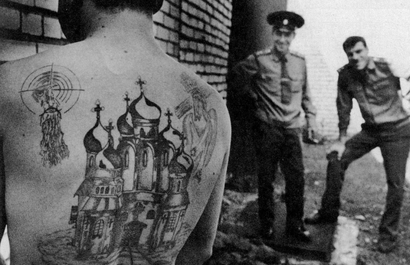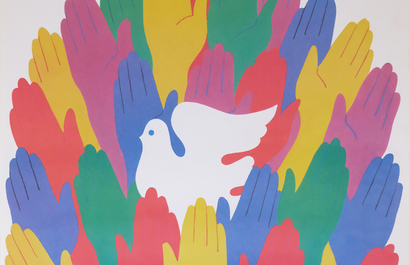The X-ray Records of the USSR

In the 1950s USSR, there were a lot of people with very different ideas of what ‘Rock Around the Clock’ sounded like.
Back then, Western music was hard to come by. Rock ‘n’ Roll and Jazz were seen as ‘culturally corruptive’. The State clamped down on it to avoid a youth revolution against the Communist regime. And the music of emigres was banned, too: those that had left the Soviet State were traitors. Turn on a radio, and it would be unusual to hear much besides Russian (or under Stalin, Georgian) folk songs.
Those that wanted to keep an ear on what was coming out of the West had to get creative. They hit on Ribs.

The Secret History of Ribs
Ribs – or music on ribs, jazz on bones, or bone music – were gramophone records etched onto X-rays. X-ray sheets worked well; their surface material was soft enough to be pressed and hold the sound (though not always brilliantly). But vinyl itself was hard to come by. X-rays weren’t. Enterprising bootleggers would simply turn up to a hospital where huge stashes of X-rays were due to be burned and exchange a few covert words. Then they’d cut them into circles using the edge of a plate and burn a hole through the middle with a cigarette. Grooves were cut and gramophone records were created.
It became a booming Black Market trade. Bootleggers could roll twenty or more Ribs up a coat sleeve and deal them from street corners. Not having a particular record in stock didn’t pose much of an impediment. It was common for bootleggers to tell clients they were getting one record, and then give them something else entirely. Buyers were none the wiser. They’d never heard Western music before. They had to take it on trust.
A Look Inside the Body Politic
In the USSR, propaganda and censorship were two sides of the same coin. To understand the way the regime worked, it’s important to look at what it celebrated, what it suppressed, and why. Ribs quite literally put the internal workings of the Soviet system on display.
While Rock ‘n’ Roll was incendiary in the USA, in the USSR it was downright dangerous. And it wasn’t just the content that was the issue – though that was feared for its potential to humanize the West and turn the younger generation against the State. The production and distribution of Ribs in of itself was classed as a “criminally hooligan trend”. The State owned the means of production and making a private profit was not merely illegal, but anti-Communist. The authorities took it seriously. Bootleggers were jailed, some more than once.
Listening to something like Rock Around the Clock was deeply subversive. The subjectivity of that experience made it even more so. There were various different versions of Rock Around the Clock, some of which weren’t Rock Around the Clock at all. They were privately – and usually poorly – produced. Most Ribs could only be played five to ten times before they broke down beyond repair. It meant that every individual experienced the song differently. And individuality is the antithesis of Communism.

Last Remains of the USSR
As reel-to-reel tapes appeared on the market in the mid-60s, Ribs fell out of fashion. Now they’re strange and sought-after collectors’ items. Stephen Coates has written the definitive history of Ribs and exhibited them around the world after finding one at a market in St. Petersburg. They’re exciting and alien-looking and give you a weird glimpse into another world. This documentary is great for more about the history of Ribs.






